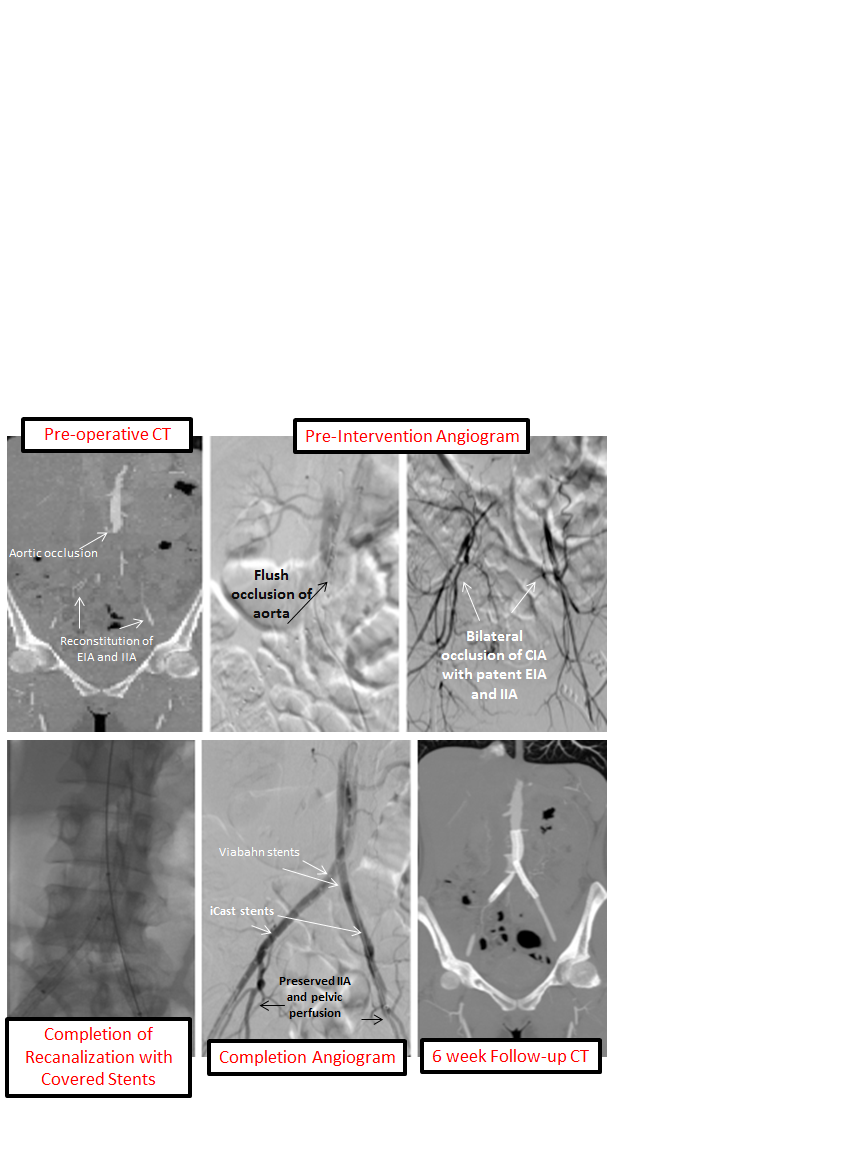|
Back to Annual Meeting Posters
Endovascular Treatment of Aortic Saddle Embolism Using Covered Stents, Effecting Full Neurologic Recovery
Jane K. Yang, M.D., Alex Nguyen, M.D., Hilene de Amorim, P.A.-C, Lee J. Goldstein, M.D., Arash Bornak, M.D..
University of Miami, Miller School of Medicine, Miami, FL, USA.
Objectives
The majority of patients with aortic saddle embolism present with lower extremity motor and sensory deficit and have traditionally been treated with surgical thrombectomy. We report the first case in the literature of an aortic saddle embolism treated endovascularly, preserving pelvic circulation, and allowing full neurologic recovery.
Methods
A 43-year-old female presented with a three-week history of worsening paraplegia and paresthesia.
A CT angiogram demonstrated an aortic occlusion immediately distal to the origin of the inferior mesenteric artery and occlusion of the common iliac arteries (CIAs), but preserved flow in the internal (IIAs) and external iliac arteries (EIAs). Given the subacute nature of the symptoms, a spinal MRI was performed, and did not show any infarcts.
In the operating room, bilateral common femoral arteries (CFAs) were controlled, distally clamped to avoid embolization, and directly accessed.
A Viabahn (Gore Medical, Flagstaff, AZ) was advanced into each CIA, with the top of each stent extending proximal to the thrombus. The two stents deployed simultaneously. On each side, revascularization of the aorto-iliac segment and exclusion of the thrombus burden was completed by deploying an iCast (Atrium Medical Corp., Hudson, NH). Each iCast overlapped with the Viabahn proximally, and distally apposed the distal CIA, preserving the internal iliac arteries and pelvic circulation.
Results
Completion angiogram demonstrated in-line flow from the aorta to both EIAs and IIAs with complete exclusion of the saddle embolus. Bilateral four-compartment fasciotomies were then performed.
Post-operatively the patient had immediate neurological recovery with a residual left foot drop that resolved completely within six weeks of physical therapy.
Conclusions
Previous treatments for aortic saddle embolism involved surgical thrombectomy, with significant risk of pelvic embolization, and left a persistent residual thrombus.
The efficacy of covered stents in treating chronic aorto-iliac occlusive disease has been reported. We present a use of covered stents in a subacute setting. We believe that preservation of pelvic perfusion was essential to maintaining spinal perfusion and protecting her from permanent neurological deficit. Our technique allowed complete and precise exclusion of the thrombus burden in the aorta and distal CIAs and prevented IIA embolization.

Back to Annual Meeting Posters

|


